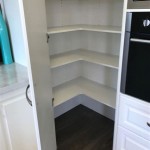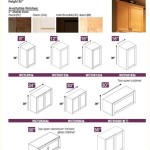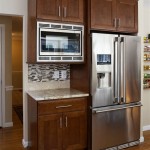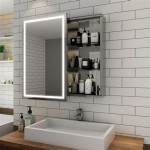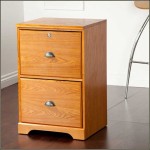Organizing Your Wardrobe With A Storage Cabinet
Maintaining an organized wardrobe can significantly impact daily routines. A cluttered wardrobe often leads to wasted time searching for specific items, frustration, and inefficient use of space. A well-organized wardrobe, conversely, promotes efficiency, reduces stress, and allows for a better understanding of available clothing and accessories. Implementing organizational strategies, particularly with the aid of a storage cabinet, can transform a chaotic wardrobe into a streamlined and manageable space.
The purpose of utilizing a storage cabinet transcends mere storage. It is about creating a system that facilitates easy access, maximizes space utilization, and protects clothing from damage. A thoughtfully chosen and strategically placed storage cabinet can become an integral component of an organized wardrobe, addressing specific storage needs and contributing to the overall aesthetic of the room. The principles of wardrobe organization revolve around decluttering, categorizing, and maintaining a structured system. A storage cabinet serves as a crucial tool in executing these principles effectively.
Selecting the appropriate storage cabinet requires careful consideration of individual needs and the specific characteristics of the wardrobe space. Factors such as available space, the type and quantity of clothing to be stored, and desired aesthetic style should all be taken into account. A poorly chosen cabinet can exacerbate existing organizational problems, while a well-selected cabinet can provide a tailored solution that significantly enhances wardrobe functionality and appearance.
Assessing Your Wardrobe Needs
The initial step in selecting a storage cabinet involves a thorough assessment of current wardrobe needs. This assessment should encompass a detailed evaluation of existing clothing items, storage limitations, and organizational challenges. A comprehensive understanding of these factors will guide the selection process and ensure that the chosen cabinet effectively addresses specific needs.
Start by taking inventory of all clothing items, including seasonal wear, formal attire, casual clothing, and accessories. Categorize these items based on type, such as shirts, pants, dresses, sweaters, and shoes. This categorization will reveal the quantity of each item and highlight potential storage requirements. For example, a large collection of sweaters may necessitate a cabinet with ample shelving, while an extensive shoe collection may benefit from a cabinet with dedicated shoe storage compartments.
Evaluate the current storage space, paying attention to any existing limitations. Measure the available width, height, and depth of the space where the storage cabinet will be placed. Consider any architectural features, such as doors, windows, or built-in fixtures, that may impact the placement or size of the cabinet. This assessment will help determine the maximum dimensions of the cabinet and ensure that it fits seamlessly into the existing space.
Identify specific organizational challenges that the storage cabinet should address. Common challenges include overflowing shelves, cluttered drawers, and difficulty accessing frequently used items. Consider whether the cabinet should provide specialized storage for specific items, such as jewelry, handbags, or hats. Addressing these challenges will help refine the search for a cabinet that provides targeted solutions and enhances overall wardrobe organization.
Once the assessment is complete, prioritize storage needs based on frequency of use and the importance of preserving specific items. Items that are used frequently should be easily accessible, while items that are stored for extended periods should be protected from dust, moisture, and pests. This prioritization will help determine the optimal configuration of the storage cabinet, including the type and number of shelves, drawers, and compartments.
Types of Storage Cabinets for Wardrobes
Numerous types of storage cabinets cater to diverse wardrobe organization needs. These cabinets vary in size, design, material, and functionality. Selecting the appropriate cabinet type depends on individual storage requirements, available space, and aesthetic preferences. Understanding the different types of storage cabinets will enable informed decision-making and ensure that the chosen cabinet fulfills specific organizational goals.
Freestanding cabinets are a popular option due to their versatility and ease of installation. These cabinets can be placed anywhere in the room and moved as needed. They are available in a wide range of sizes, styles, and materials, making them suitable for various wardrobe configurations. Freestanding cabinets often feature shelves, drawers, and hanging rods, providing flexible storage options for clothing and accessories.
Wall-mounted cabinets offer a space-saving solution, as they are attached to the wall and do not occupy floor space. These cabinets are ideal for smaller rooms or wardrobes where maximizing floor space is essential. Wall-mounted cabinets can be used to store clothing, accessories, or decorative items. They are typically available in modular designs, allowing for customization and expansion as needed.
Drawer cabinets, also known as chest of drawers, are specifically designed for storing folded clothing items, such as shirts, pants, and sweaters. These cabinets feature multiple drawers of varying sizes, providing ample storage space and facilitating easy access to individual items. Drawer cabinets are available in various styles and finishes, complementing different interior design schemes.
Wardrobe cabinets, also referred to as armoires, are large, enclosed cabinets designed for storing hanging clothing items. These cabinets typically feature a hanging rod for dresses, suits, and coats, as well as shelves and drawers for folded clothing and accessories. Wardrobe cabinets provide comprehensive storage solutions for a complete wardrobe and are often used in bedrooms or dressing rooms.
Shoe cabinets offer dedicated storage for shoes, protecting them from dust and damage. These cabinets feature shelves or compartments specifically designed to accommodate shoes of various sizes and styles. Shoe cabinets help keep shoes organized and easily accessible, preventing clutter and extending their lifespan.
Optimizing the Use of Your Storage Cabinet
Once a storage cabinet has been selected and installed, it is essential to optimize its use to maximize its organizational benefits. This optimization involves implementing effective storage strategies, maintaining a consistent organizational system, and regularly decluttering the wardrobe to prevent overcrowding. These practices ensure that the storage cabinet remains an effective tool for maintaining a well-organized and functional wardrobe.
Utilize vertical space by stacking items on shelves and using shelf dividers to create distinct compartments. This strategy maximizes storage capacity and prevents items from toppling over. Fold clothing neatly and consistently to save space and maintain a tidy appearance. Consider using specialized folding techniques, such as the KonMari method, to further optimize space utilization.
Employ clear storage containers to organize smaller items, such as socks, underwear, and accessories. Label the containers to easily identify their contents. This practice prevents clutter and ensures that items are easily accessible. Utilize drawer organizers to separate and compartmentalize items within drawers, such as jewelry, belts, and scarves.
Implement a consistent organizational system based on clothing type, color, or season. This system facilitates easy retrieval of items and promotes a cohesive and visually appealing wardrobe. Hang clothing items in a consistent direction and spacing to maximize space and create a streamlined appearance. Consider using thin, space-saving hangers to further optimize space utilization.
Regularly declutter the wardrobe by removing items that are no longer worn, fit, or are in good condition. Donate or sell these items to declutter the space and make room for new additions. Seasonal decluttering is particularly important, as it allows for the removal of out-of-season clothing items and the rotation of seasonal wear. This practice prevents overcrowding and ensures that the wardrobe remains manageable and functional.
Maintain the cleanliness of the storage cabinet by regularly dusting and vacuuming the interior and exterior surfaces. This practice prevents the buildup of dust, dirt, and pests, protecting clothing and accessories from damage. Inspect the cabinet for any signs of wear and tear, such as loose hinges or damaged shelves, and make repairs as needed to ensure its longevity and functionality.

Casemiol 66 9 Tall Storage Cabinet Organizer With Sliding Doors Bedroom Wardrobe Armoire Closet Hanging Rod Large Modern Shelves

Wardrobe Closet 66 9 Tall Storage Cabinet With Doors And Hanging Rod Bedroom Armoire Clothes Organizer White

Casemiol Tall Wooden Storage Cabinet Organizer 71 Oak Wardrobe Closet With Hanging Rod Drawers And Shelves Com

45 Budget Friendly Closet Organization Ideas

Easy Diy Closet Organizing Ideas Sanctuary Home Decor

9 Smart Strategies To Get More Out Of Your Small Closet Storage Space

Easy Diy Closet Organizing Ideas Sanctuary Home Decor

Wardrobe Closet 67 9 Tall Storage Cabinet With Mirror Doors And Hanging Rod Bedroom Armoire Clothes Organizer Drawer White

7 Closet Organization Ideas To Maximize Space Stefana Silber

Diy Closet Organization With Shelving And Drawers
Related Posts

